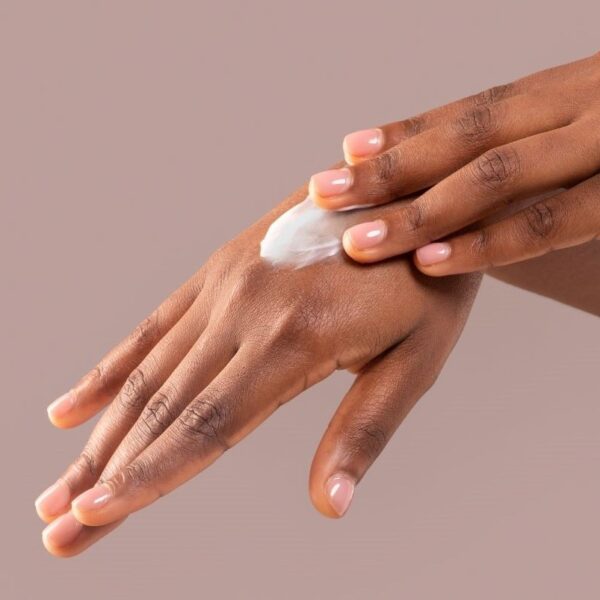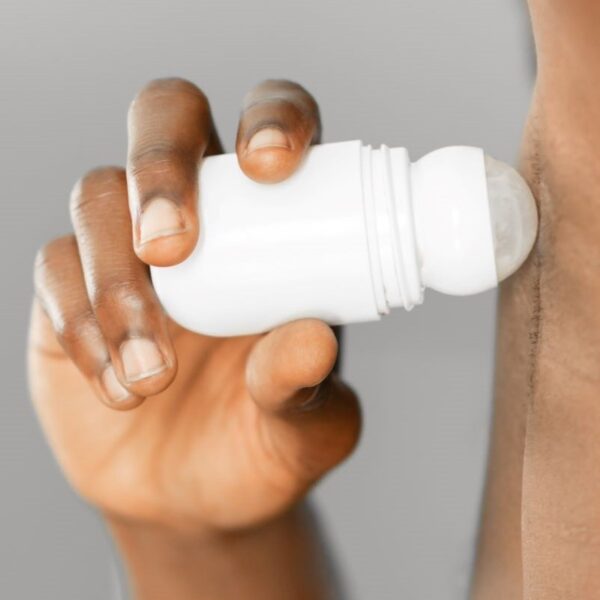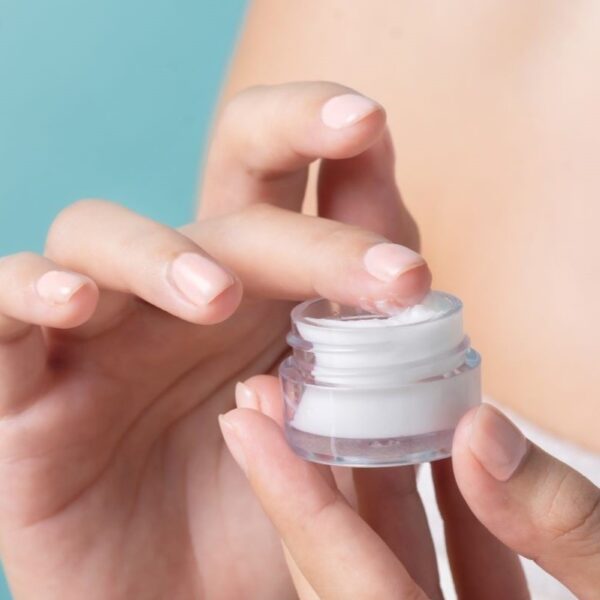Product formulators have a variety of antimicrobial cosmetic preservatives to choose from, with some of the most effective being benzoic acid, phenoxyethanol, DMDM hydantoin, and benzalkonium chloride. This guide compares these preservatives, looking at the properties, applications, and safety considerations of each.
The Function of Preservatives
Preservatives help protect cosmetic products from microbial spoilage. A preservative is a natural or synthetic substance intended to inhibit microorganisms’ development. Preservatives must be effective over a broad activity spectrum and have a duration that exceeds the expected shelf-life of the product plus the usage time. Additionally, the antimicrobial effects of a preservative must be strong enough to prevent a microorganism’s adaptation and resistance gain over time.
How Preservatives Work
Unlike antibiotics, which act on specific sites of biosynthetic processes of microorganisms, preservatives act on multiple targets. However, at sub-inhibitory concentrations, preservatives may act on a single target, which can lead to the development of resistance in microorganisms.
Preservatives can penetrate the cell envelope of gram-negative bacteria by three routes:
- The hydrophilic pathway, through porins
- The hydrophobic pathway by the lipid bilayer
- Self-promoting, which involves the displacement of divalent cations that bind adjacent lipopolysaccharide (LPS) molecules, thereby disrupting the structure of the outer membrane and exposing the phospholipid bilayer areas
Various factors affect a preservative’s effectiveness in any given application. Here are several formulation considerations to keep in mind when working with preservatives.
- The chemical and biological activities of a preservative can be influenced by the overall formulation of the product
- Surfactants, nonionic in particular, can influence the activity of preservatives, especially in oil-based emulsions
- In addition, the buffer system and the water activity may also have an effect on the preservative mode of action
- The level of solids present in a formulation can also affect the effectiveness of a preservative
- The type of container used for conditioning a cosmetic product will influence the concentration and activity of a preservative
Considerations for Selecting a Preservative
When selecting a preservative or set of preservatives for use in a product, formulators should keep the following considerations in mind.
- The preservative shouldn’t interfere with the cosmetic product’s action or mode of activity
- The preservative shouldn’t create any negative attributes, such as affecting the product’s odor, color, or feel
- The preservative must not cause toxic or irritating effects to the end user
- The preservative should enable a sufficient shelf life for the product
- The preservative should be stable to moisture, heat, and dryness
- The preservative must have activity at low concentrations
- The preservative must be effective over a wide range of pH values
Types of Preservatives
The most commonly used antimicrobial preservatives are presented in the table below, divided according to their chemical composition and chemical family.
| Chemical Family | Ingredient Examples | Mode of Action | Typical Applications |
|---|---|---|---|
| Organic Acids | Sorbic Acid Benzoic Acid Propionic Acid | pH is considered to be a major determinant of an organic acid’s effectiveness because it affects the concentration of formed undissociated acids. Uncharged molecules are those forms that enable the penetration of organic acids into the cell. However, the antimicrobial efficacy of most organic acids is presented by their dissociated form. The acidic pKa of these preservatives should be controlled since a pH change of 1.5 or more above the neutrality may cause the progressive loss of antimicrobial activity. | It can be used in various leave-on applications and rinse off formulations in permitted range. However it Should not be used in oral and eye products. |
| Alcohols and Phenols | Phenoxyethanol Benzyl Alcohol | Halogenation increases the antibacterial activity of the phenols. When the alkyl group is in the ortho position and the halogen is in the para position, the phenols will have greater antibacterial activity. Nitration has the advantage of increasing the activity with respect to bacteria by the modification of the oxidative phosphorylation | Maximum concentration of 0.2% in mouthwashes and 0.3% in special cosmetic products, such as toothpaste, hand soaps, body soaps,and face powders. These preservatives are prohibited in leave-on products designed for application on the diapers of children under three years of age. |
| Aldehydes and Formaldehyde Releasers | Imidazolidinyl Urea Diazolidinyl Urea Quaternium-15 DMDM Hydantoin Bronopol | Formaldehyde donors slowly release formaldehyde by degradation or decomposition under use conditions. The antimicrobial activity of these preservatives results from formaldehyde released by hydrolysis in the presence of water. | Formaldehyde known as oxymethylene or formalin (37% concentrated solution of formaldehyde) is a preservative used in shampoos, shower gels, and liquid soaps. |
| Quaternary Ammonium Compounds (QAC) | Benzalkonium Chloride Behentrimonium Chloride | The antimicrobial activity of the QACs is a function of the length of the N-alkyl chain, which confers lipophilicity. Thus, for a QAC to have high microbicidal activity, at least one of the R groups must have a chain length in the C8 to C18 range. The optimum activity against Gram-positive bacteria and yeast is obtained with chain lengths of 12 to 14 alkyls, while optimum activity against Gram-negative bacteria is obtained with chain lengths of 14–16 alkyls. Compounds with N-alkyl chain lengths <4 or >18 are virtually inactive | They are the most used antiseptics and disinfectants. Higher % usage in rinse-off hair products, leave-on hair products, and leave-on face products. |
Comparing Benzoic Acid, Phenoxyethanol, DMDM Hydantoin, and Benzalkonium Chloride
Benzoic acid, phenoxyethanol, DMDM hydantoin, and benzalkonium chloride are all popular, commonly used preservative systems that can be used in multiple applications. They’re widely used in the cosmetic industry in a variety of personal care products, including skin care, hair care, and sun care. Let’s take a closer look at each of these preservatives.
Physico-Chemical Properties
The following table breaks down the chemical properties of benzoic acid, phenoxyethanol, DMDM hydantoin, and benzalkonium chloride.
| Properties | Benzoic Acid | Phenoxyethanol | DMDM Hydantoin | Benzalkonium Chloride |
|---|---|---|---|---|
| Physical form | Solid | Liquid | Solid | Solid |
| Appearance | White, Crystalline Powder | Clear, Colorless Oily Liquid | White, Crystalline Powder | 100% is white or yellow powder; gelatinous lumps |
| Molecular Weight g/mol | 122.12 | 138.166 | 188.181 | 283.88 |
| Chemical Formula | C7H6O2 | C8H10O2 | C7H12N2O4 | C17H30ClN |
| Odor | Faint, Pleasant Odor | Faint Aromatic to Odorless | Odorless | Aromatic Odor |
| pH (1% Solution) | 4-4.20 | 6.5-7.15 | 6.5-7.5 | 6.5-7.15 |
| Solubility | Poorly soluble in Water, very soluble in Alcohol, Ether, and Benzene. | Partially Water-soluble | Highly Water-soluble | Freely soluble in Water, Alcohol, Acetone |
| Boiling Point | 249.2 °C | 247 °C | 303.7±52.0 °C | >100°C |
| Melting Point | 122.3 °C | −2 °C | 1.00-2.5 °C | -5°C |
| Density | 1.27 g/cm3 | 1.102 g/cm3 | 1.34 g/cm3 | 0.98 g/cm3 |
| Storage Requirement | Cool, dry, well-ventilated place at 15-30 ℃. | Aqueous phenoxyethanol solutions are stable and may be sterilized by autoclaving. Cool, dry, well-ventilated place at 15-30 ℃. | Cool, dry, well-ventilated place at 15-30 ℃. | Benzalkonium chloride is hygroscopic and may be affected by light, air, and metals. The bulk material should be stored in an airtight container, protected from light and contact with metals, in a cool, dry, well-ventilated place at 15-30 ℃. |
| Shelf Life | 36 months | 36 months | 36 months | 24-36 months |
Typical Applications
Based on its properties, each preservative is well-suited to a variety of products. The following table shows typical applications for each preservative.
| Preservative | Typical Applications |
|---|---|
| Benzoic Acid | Anti-Aging Products, Moisturizers, Sunscreens |
| Phenoxyethanol | Serums, Creams, Lotions, Anti-Acne Products |
| DMDM Hydantoin | Shampoo, Hair Conditioners, Skin Gel, Hair Grooming Products |
| Benzalkonium Chloride | Hair Conditioners, Antiseptic Products, Anti Lice Treatments, Antistatic Functionality Hair Products, Sanitizers |
Formulation Considerations for Benzoic Acid, Phenoxyethanol, DMDM Hydantoin and Benzalkonium Chloride
The following table details the conditions governing each preservative and provides formulation guidelines for each ingredient.
| Conditions | Benzoic Acid | Phenoxyethanol | DMDM Hydantoin | Benzalkonium Chloride |
|---|---|---|---|---|
| pH Range Compatibility | 2.5-4.5 | 3-10 | 3-9 | 4-10 |
| Heat Stability | Up to 250°C | Up to 85°C (185°F) | Up to 60°C | Up to 60°C |
| Recommended Dosage (%) | Max 0.5% | 0.3-1.0% (max 1%) | 0.15-0.4 % | Up to 0.1% |
| Formulation Guidelines | Add to water phase (below 80°C) or during the cool-down phase (~40°C) | Add to water phase (below 80°C) or during the cool-down phase (~40°C) | Add to water phase (below 80°C) or during the cool-down phase (~40°C) | Add to water phase (below 80°C) or during the cool-down phase (~40°C) |
Regulations Governing Benzoic Acid, Phenoxyethanol, DMDM Hydantoin and Benzalkonium Chloride
The following table outlines the various regulations governing the use of preservatives in different countries.
| Regulations | Benzoic Acid | Phenoxyethanol | DMDM Hydantoin | Benzalkonium Chloride |
|---|---|---|---|---|
| CAS No. | 65-85-0 | 122-99-6 | 6440-58-0 | 8001-54-5 |
| EC No. | 200-618-2 | 204-589-7 | 229-222-8 | 616-786-9 |
| REACH Compliance | 1907/2006 | 1907/2006 | 1907/2006 | 1907/2006 |
| US Regulation | On the FDA list of substances that are generally recognized as safe (GRAS) | Included in the FDA Inactive Ingredients Database (topical preparations) | – Approved by CTFA for both rinse-off and leave-on applications – Can be used at a level up to 0.6% DMDMH | Included in the FDA Inactive Ingredients Database (inhalations, IM injections, nasal, ophthalmic, otic, and topical preparations) |
| UK & Canada Regulations | Included in nonparenteral medicines licensed in the UK. Included in the Canadian List of Acceptable Non-medicinal Ingredients | – Included in nonparenteral medicines licensed in the UK. – Included in the Canadian List of Acceptable Non-medicinal Ingredients | – Allowed up to 0.42% in rinse-off products with a warning label – Not permitted for Oral Care products | – Included in nonparenteral medicines licensed in the UK – Included in the Canadian List of Acceptable Non-medicinal Ingredients |
| European Union Cosmetic Regulation (EC) | – Is authorized as a preservative in cosmetic formulations – Permitted for use as preservatives in cosmetics and personal care products at a maximum concentration (expressed as the acid) of 2.5% in rinse-off products (except oral care products), 1.7% in oral care products and 0.5% in leave-on products | – Is authorized as a preservative in cosmetic formulations – Under European regulations for cosmetics (76/768/EEC), the maximum authorized concentration (MAC) of 2-phenoxyethanol is 1.0% | – Is authorized as a preservative in cosmetic formulations – Finished products containing DMDMH must be labeled with the warning “contains formaldehyde” if the (free) formaldehyde concentration exceeds 0.05% | Is authorized for use at maximum concentrations of 3% in rinse-off hair care products and 0.1% in other products, and must be labeled with conditions of use and warnings |
Balancing Antimicrobial Efficacy with Safety
Antimicrobial efficacy is the main function of a cosmetic preservative. However, the inherent toxicity of these ingredients is a problem that the cosmetic industry should address. Many regulations limit — or even prohibit — the use of the most potent preservatives due to their toxicity. As a result, cosmetics manufacturers are continually seeking new preservation strategies to simultaneously improve safety and prevent microbial growth.



